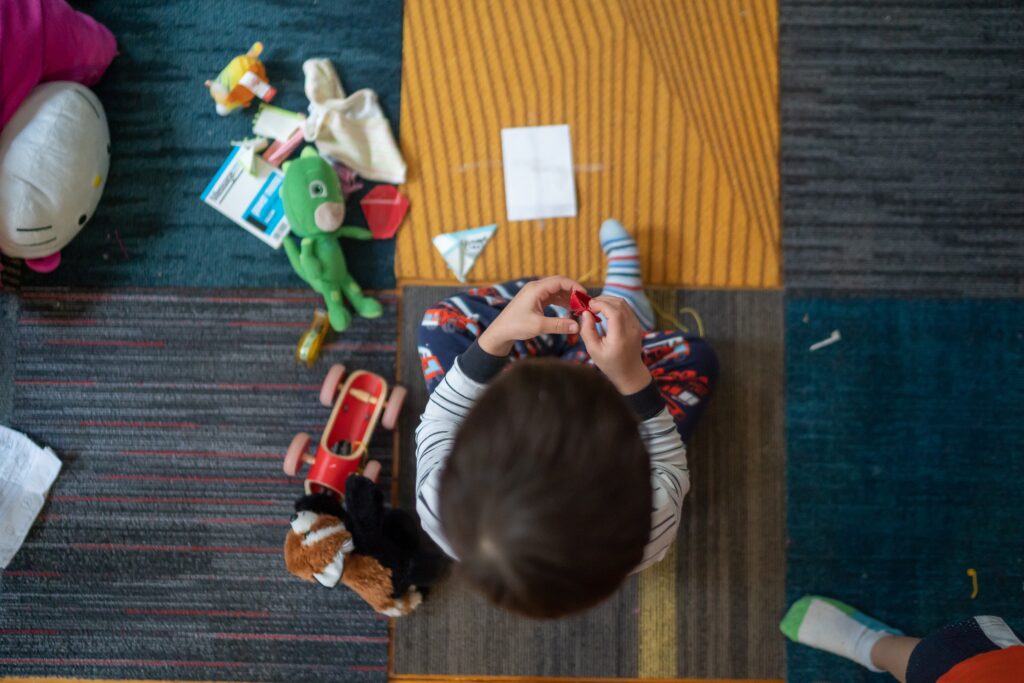
By Torrey Creed, PhD
Play can be used to teach children important CBT concepts
Seasoned child therapists who pursue training in cognitive behavioral therapy (CBT) often ask the same question: “I usually spend time playing with my clients, but in CBT, do you ever actually just play with kids?” This question is not as simple as it may first appear, and the answer addresses two important principles behind the therapeutic work.
First, the answer to this question is yes… and no. Yes, a CBT therapist often uses play with child clients. Any child therapist whose repertoire is limited to holding a conversation with a child while both parties sit still, hands folded in their laps, will likely find limited success. CBT therapists and clients might be observed playing a game, going for a walk, painting, singing, playing basketball, and more. The part that makes the question less simple than it may appear is the word “just.” A CBT therapist certainly may play with a child, but “just” play? Perhaps not.
Principle 1: Children may benefit from CBT that is experiential. CBT (with clients of any age) focuses on the cognitive model, or the connection between thoughts, feelings, and behavior. When the client’s thoughts, feelings, or behavior are related to distress or impairment, intervention aims to make a shift in at least one of these three components. In other words, intervention may target a shift in thoughts, leading to different feelings and behavior. Alternatively, intervention may target a shift in behavior, leading to different thoughts and feelings. When we begin by examining thoughts, particularly through discussion about the thoughts, we are focused on the abstract. Asking a client to identify a thought, consider whether the thought is as accurate or helpful as it might be, and then shift to a new thought, relies in part on a client’s meta-cognitive abilities. In children, those skills for thinking about thinking are still developing. If instead CBT begins with behavior, the child may have a new experience that can lead to new ways of thinking and feeling. For example, imagine 8-year old Ben, who avoids challenges because he thinks that if he cannot do something perfectly, he will be unable to enjoy doing it at all. Ben’s CBT therapist may design a behavioral experiment where they play a new game while tracking Ben’s anticipated and actual enjoyment. If the behavioral experiment is successful, Ben may find that he actually enjoyed himself quite a bit even though he had to learn the game as they went along. Beginning with behavior (playing the game while learning it) leads to a new experience that Ben can use as concrete evidence against his original unhelpful belief.
Principle 2: Within legal and ethical limits, there is very little a CBT therapist will not do in session – as long as there is a rationale behind the action. Using the example above, the therapist was not playing the game “just” to play the game. Instead, the intervention was selected based on a case conceptualization to strategically target the belief that was causing Ben to avoid challenges. Using case conceptualization as a guide, a CBT therapist has great opportunities to be creative, playful, engaging, and flexible in designing interventions. When the therapist is able to identify why he or she is playing a game, collaborating on a song, or taking a walk, the activity has the potential to become a powerful intervention.
Using these two principles as a guide, a child CBT therapist may quite often use play with clients in session, but very rarely will they be “just” playing. They may be practicing new skills, gathering evidence, testing out negative predictions, and having fun at the same time.